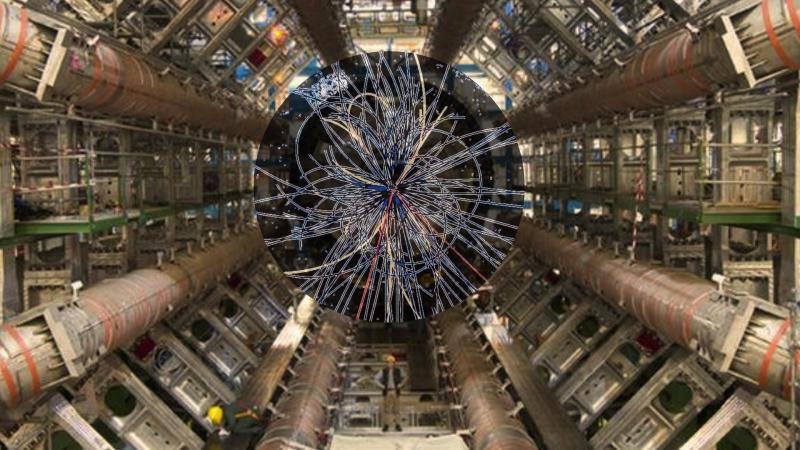
CERN Scientists Shedding Light on Antimatter & Universe’s Origins
The mysteries of the universe have long fascinated scientists and the general public alike. At the heart of these enigmas lies the concept of antimatter, a phenomenon that has puzzled experts for decades. Recently, a breakthrough discovery at CERN’s Large Hadron Collider (LHC) has shed new light on the elusive nature of antimatter, offering crucial insights into the fundamental forces of nature and the universe’s early moments.
The ALICE collaboration, a team of scientists from the European Organization for Nuclear Research (CERN), has confirmed the first evidence of antihyperhelium-4 (α¯4), a rare and exotic particle. This achievement marks a significant milestone in the quest to understand matter-antimatter balance and the origins of our universe.
What is Antimatter?
Antimatter is a type of matter that has the same mass as regular matter but opposite charges. When antimatter comes into contact with regular matter, it annihilates, releasing a vast amount of energy in the process. This phenomenon has profound implications for our understanding of the universe, as it suggests that there should be an equal amount of antimatter and regular matter in existence.
However, this symmetry is not observed in nature. The universe appears to be predominantly composed of regular matter, with only a tiny fraction of antimatter present. This imbalance has puzzled scientists for decades, and the discovery of antihyperhelium-4 offers a new avenue for exploring this mystery.
The Large Hadron Collider and Heavy-Ion Collisions
The Large Hadron Collider is a powerful particle accelerator located at CERN, nestled in the Swiss-French border. The LHC is designed to collide protons at incredibly high energies, recreating the conditions that existed in the early universe. By studying these collisions, scientists can gain insights into the fundamental forces of nature and the properties of particles that make up the universe.
The ALICE collaboration, which is one of the LHC’s four main experiments, uses heavy-ion collisions to study the properties of quark-gluon plasma, a state of matter that existed in the early universe. In these collisions, scientists collide heavy ions, such as lead or gold, at nearly the speed of light, creating a hot and dense plasma that simulates the conditions of the early universe.
The Discovery of Antihyperhelium-4
The ALICE collaboration’s recent discovery of antihyperhelium-4 is a testament to the power of the LHC and the ingenuity of scientists. Antihyperhelium-4 is a rare particle that consists of two antiprotons and two antineutrons, bound together by the strong nuclear force. The discovery of this particle offers a new way to study the properties of antimatter and the forces that govern the behavior of particles.
The ALICE collaboration achieved this breakthrough by analyzing data from heavy-ion collisions at the LHC. By detecting the decay products of antihyperhelium-4, scientists were able to confirm the existence of this exotic particle.
Implications for Our Understanding of the Universe
The discovery of antihyperhelium-4 has significant implications for our understanding of the universe. By studying the properties of this particle, scientists can gain insights into the fundamental forces of nature and the balance between matter and antimatter.
One of the most intriguing implications of this discovery is that it may shed light on the origins of the universe. The early universe was a hot and dense plasma, in which particles and antiparticles were created in equal numbers. The discovery of antihyperhelium-4 offers a new way to study the properties of this plasma and the forces that governed its behavior.
Conclusion
The discovery of antihyperhelium-4 at the Large Hadron Collider is a significant milestone in the quest to understand the universe. By studying this exotic particle, scientists can gain insights into the fundamental forces of nature and the balance between matter and antimatter.
As scientists continue to unravel the mysteries of antimatter, they may uncover new secrets about the universe’s origins and the forces that govern its behavior. The ALICE collaboration’s achievement is a testament to the power of human curiosity and the importance of continued investment in scientific research.
Source:
https://researchmatters.in/news/exotic-antimatter-spotted-heavy-ion-collisions-lhc






